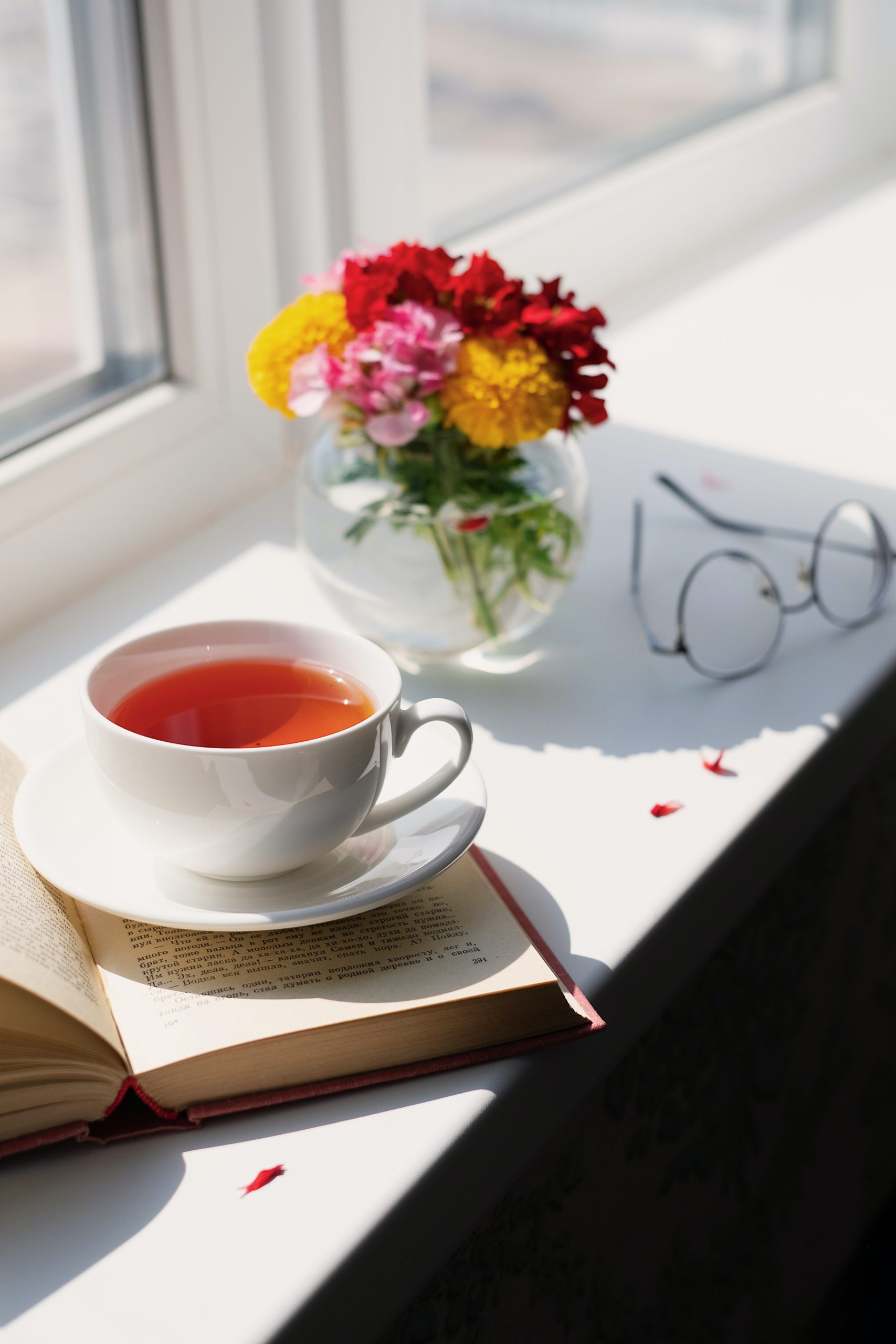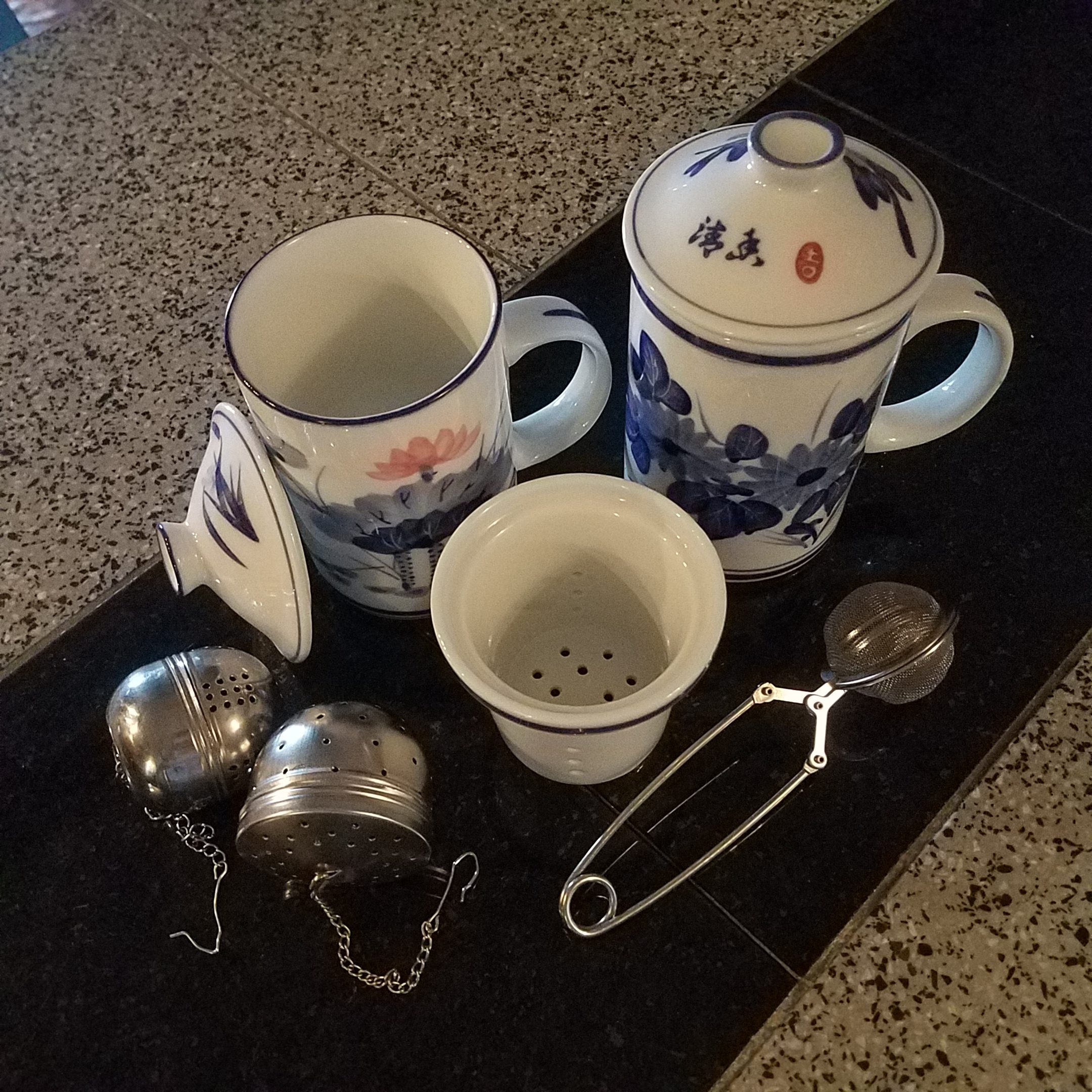I began my true love for tea when I visited China. It was a real cultural experience being served in a Beijing tearoom during our tour. There were so many tea leaves you could choose from — Oolong, white, green, specialty black… too many to try in one afternoon!
After checking out the aroma of at least 20 different dried tea leaves, we chose a white tea and a specialty black tea with dried rose buds on top. Needless to say, we spent way too much money on Chinese tea to bring back to America.
I remember that afternoon every time I drink hot tea. It motivates me to dry my own herbs and flowers to give me that same delightful and aromatic experience I had in China.
Besides the convenience of having a fresh supply of tea in your back garden, growing your own tea offers you the opportunity to steep loose leaves. Loose leaf tea tastes better than store-bought bags and contains higher antioxidants — meaning better health benefits for you.
Although I do not grow every single one of these in my herb garden at the farm, I have tasted all but one and can personally attest that any of them will make a delicious hot tea!
If you love tea like me, any of these 9 teas are easy for you to grow in your herb garden.
9 Teas to Grow in Your Herb Garden
[P = Perennial] [A = Annual]
1. Anise Hyssop (P): This a great tea herb with a subtle anise or licorice taste. Don’t confuse this with Anise, which is an entirely different plant. Anise hyssop makes beautiful purple flowers that attract honeybees, too.
2. Lemon Balm (P): This is another great tea herb with a lemon taste. Don’t use too much or your tea will taste like lemon Pledge furniture polish. Stick with a teaspoon of dry leaves per cup.
3. “Limonella” Lemon Balm (P): This herb is similar to lemon balm and also a great tea option.
4. Lemon Catnip (P): Love lemon? You’re in luck. This is another lemon flavored tea herb.
5. Bergamot (P): Bergamot is also called bee balm as honeybees are attracted to the showy flowers. This can be used as a tea herb, but some people don’t like the taste of it.
6. Chamomile (P): This is perhaps one of the most popular herbal teas. This tea herb self sows and seems to come up in a different spot each year as a result. The little white daisy-like flowers are what is harvested.
7. Mint (P): Spearmint and peppermint are just 2 types of mint that are available. In the summer I steep mint in with my black tea to make a delicious and refreshing iced tea for the family.
8. Oregano (P): This is a culinary herb used in Italian dishes, among others. It’s not my favorite tea, but it does make a great remedy for sore throats.
9. Stevia (A); if in zone 9 (P): This is a tea herb that is naturally sweet. I add a small leaf to steep with other tea herbs and the little leaf sweetens the whole pot. Don’t overdo it or it will cause your tea to be bitter.
All of these are perennial (except stevia), so they are definitely sustainable for a homestead, returning year after year to your garden!
How do you steep tea properly for the maximum amount of flavor?
Tea Tools: What do you need?
Since you’ll be growing your own herbs for tea and steeping loose leaves, you’ll need a tea strainer to keep the leaves from entering your mug while you let it steep in hot water. We recommend a stainless steel strainer which will last for years — and at a very low cost, too.
Other than a tea strainer, your favorite mug and hot water are all you need for a cozy night in.
Here is a picture of my stainless steel tea strainers and a couple of “lazy teacups” I brought home from China. The lazy teacups make it easy — just put the strainer cup with filled herbs or tea inside the mug and pour boiling water over the leaves. After steeping, just remove the strainer cup and enjoy your tea!
Tea Times: How long to steep?
If you’re new to the art of tea (yes, it’s an art — but a relaxing one, at that), it can be easy to think that the longer you steep the tea, the stronger (and better) flavor you’ll receive.
Yes, your tea will be stronger, but not in the way you’d like. Oversteeping tea releases tannins, contributing to a bitter taste. The best way to ensure your tea is steeped to your liking is to taste test it every 30 seconds. After all, every palette has its particular tea taste preferences.
There are general recommended steep times, depending on each type of tea. Sencha Tea Bar recommends a 5 to 7 minute steep time for herbal teas.
Read their full tea recommendations here.



